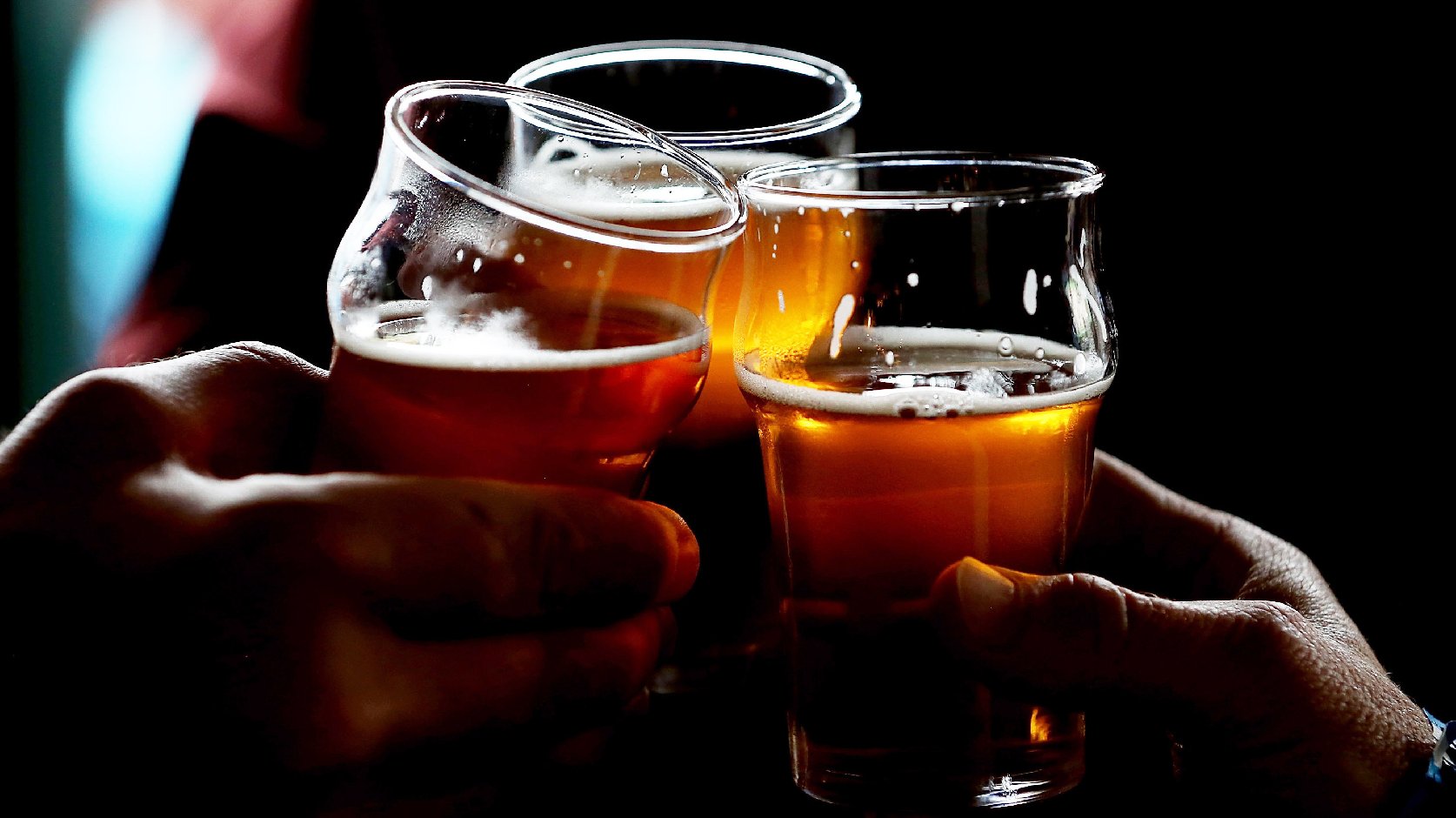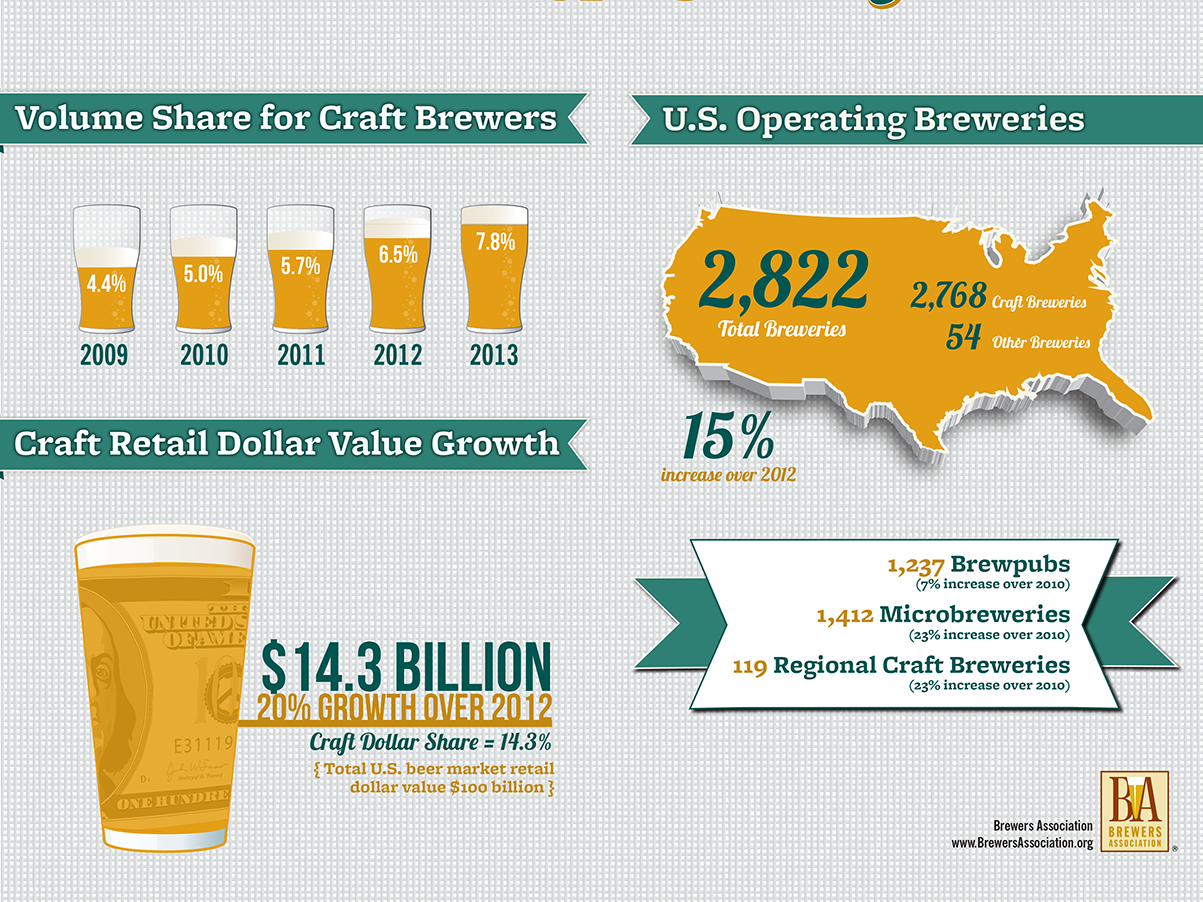
Post by Laurel White, The Salt at NPR Food (3/18/14)
If you think craft beer is seemingly everywhere these days, there's good reason. From bars and restaurants to grocery store aisles, the selection of locally made, often quirkily named brews has grown at an exponential rate – and it looks set to keep on growing.
Craft beer sales jumped 20 percent last year and now make up nearly 8 percent of all beer sales in America, according to new numbers from the Brewers Association, an industry trade group.
"With this stellar year, craft has now averaged 10.9 percent growth over the last decade," said Bart Watson, staff economist at the association. "Beer drinkers are excited about what small and independent brewers are offering, and that is evidenced by the rising production and sales of the craft segment."
And craft breweries are quickly multiplying, too: There were 2,768 of them operating in the United States last year, up from around 2,300 in 2012, according to the association. (A history of craft brewing on the group's site points out that there were only eight craft breweries in the U.S. in 1980 and 537 in 1994.)

To be deemed a "craft" brewery by the association, a facility must be "small, independent, and traditional:"
- Small: A facility can produce no more than 6 million barrels of beer annually.
- Independent: Less than 25 percent of the craft brewery can be owned or controlled (or have "equivalent economic interest") by a beverage alcohol industry member that is not itself a craft brewer. (For example, Anheuser-Busch can't own more than 25 percent of a "craft" brewery – that's what excluded Goose Island from the club in 2011.)
- Traditional: Most of the alcoholic beverages produced by the brewery have to be beers whose flavor derives from "traditional or innovative brewing ingredients and their fermentation." (No flavored malt beverages allowed.)
The movement away from "fizzy, yellow, uninteresting, adjunct-laden lagers" reflects a maturing and more sophisticated American palate, says Matt Simpson, owner of The Beer Sommelier.